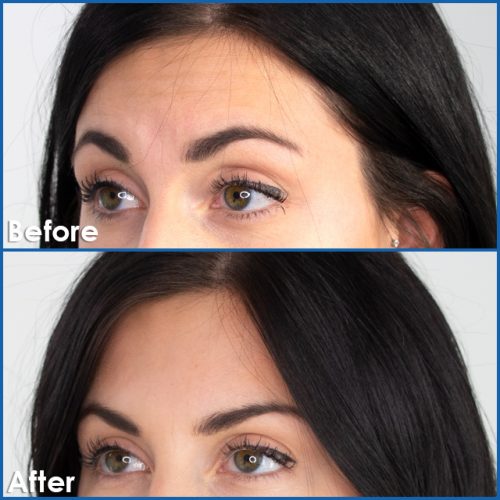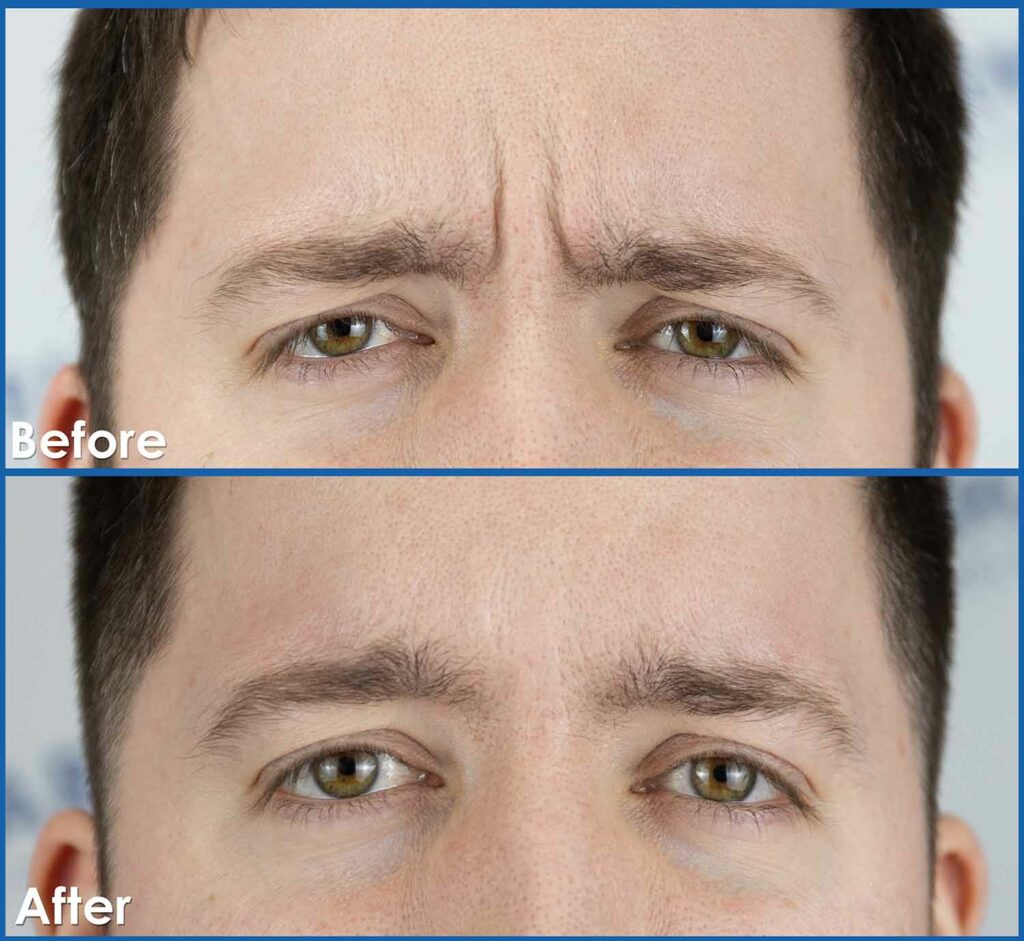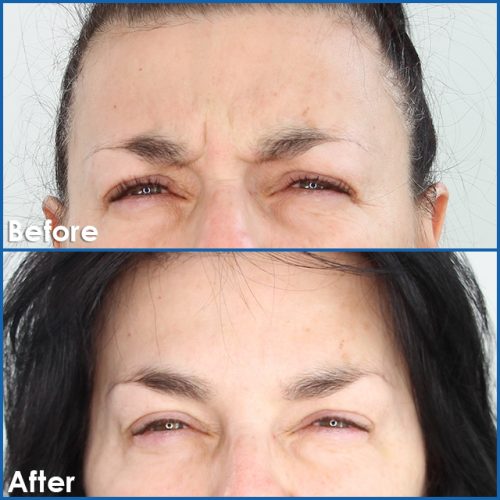Botox Specialists
Reduce the appearance of wrinkles and fine lines
At the Sharma Clinic, we’re dedicated to enhancing your natural beauty. Our skilled team specializes in creating a refreshed and rejuvenated appearance using Botox®.
By carefully targeting specific facial muscles, we can smooth wrinkles, soften lines, and lift sagging areas, minimizing the signs of aging like frown lines, crow’s feet, and forehead creases. This minimally invasive approach allows you to maintain a natural and expressive look while achieving a more youthful and confident appearance.

How does Botox® work?
Botulinum toxin, more commonly known as Botox®, is an FDA-approved drug used in medical and cosmetic procedures to weaken or temporarily paralyze the nerves that cause facial muscles to contract.
Once a small amount of Botox® is injected into these muscles they relax and soften. In turn, the skin covering these muscles gradually becomes smoother and appears less wrinkled.
Who is a good candidate for Botox®?
Botox® treatments can help improve the appearance of these dynamic wrinkles, such as crow’s feet, frown lines, forehead creases, upper lip creases, and neck bands.
To be a good candidate for Botox® treatment you should:
- Be between 18 and 65 years of age
- Have stable overall health
- Have realistic expectations about the treatment
- Have dynamic wrinkles that can be successfully treated with Botox®
Botox Case Studies



Testimonials & Reviews
Here’s what our clients are saying





Timothy Coady
Dr. Sharma is a professional in his field and is second to none, his passion for quality shows in his results and his caring personality show why he and his team are successful. The environment is warm and welcoming with staff being friendly, courteous, caring and very genuine. Follow up appointments with the Clinic was simple and easy which made the experience even better as I am not from Edmonton. 10/10 would recommend this Clinic for any treatment you are looking for as Dr. Sharma and his team will provide you with the best service and results in the industry.





Diva Niaz
Wow highly recommend to all of my family and friends! Sumeyra is so talented and kind- she explains things in simple terms and makes it an easy, comfortable experience. She is very compassionate as I truly felt heard and taken care of. Sumeyra takes the time to listen to what you want and makes it happen so effortlessly. Thank you so much, can’t say it enough! Can’t wait for my next appointment.
Get more information
Knowledge Centre
Currently no posts on this topic, but please visit our knowledge centre for information on other similar topics.
Botox® FAQS
We’ve compiled a list of some of the most common questions asked during our initial consultation
Botox® is used to treat dynamic wrinkles such as crow’s feet, frown lines, forehead creases, upper lip creases, and neck bands. These lines are the result of repeated facial muscle contraction that typically occurs when we laugh, smile, frown, or grimace.
During your consultation, we will conduct a full examination, address your concerns, and discuss the best treatment option appropriate for you.
The typical duration of a Botox® treatment is 3 to 8 months, after which many patients elect to have it performed again to keep up the appearance of having smoother, more youthful skin.
Several factors affect the duration of the Botox® treatment. Many of these factors are unique to the patient. For instance, people with faster metabolisms may find their Botox® wears off sooner. Certain lifestyle factors, such as smoking and excessive sun exposure, can also shorten the duration of Botox® effects. Which facial area is being treated and the skill of the physician also comes into play.
You may feel a pinch as the Botox® is injected into your skin, although local anesthetic will help with this. Your face may feel tighter than normal afterwards. There will also typically be some bruising and swelling that goes away after 24 hours.
We prioritize the safety and comfort of our patients above all else and always look to provide the best, most comprehensive treatment to ensure you are comfortable during the procedure.
Redness and swelling of the treatment area may occasionally occur following Botox® injections. These side effects typically clear up within the first 30 minutes of treatment.
You should avoid touching the area of the affected skin for about an hour after treatment to prevent the Botox® from spreading. On rare occasions, patients may experience some temporary muscle weakness surrounding the treatment area.
Botox® in Edmonton has come down in price and is now affordable to those even on modest incomes. The exact cost of Botox® depends on the individual patient’s concerns and circumstances, including the number of areas that need to be treated and the amount of Botox® required. This can be discussed further during your consultation.
Book now
Talk to a Botox® Expert in Edmonton, Alberta
If you are considering options for Botox®, our experienced team ready to help. Give us a call or book a consultation online, and say goodbye to wrinkles.



